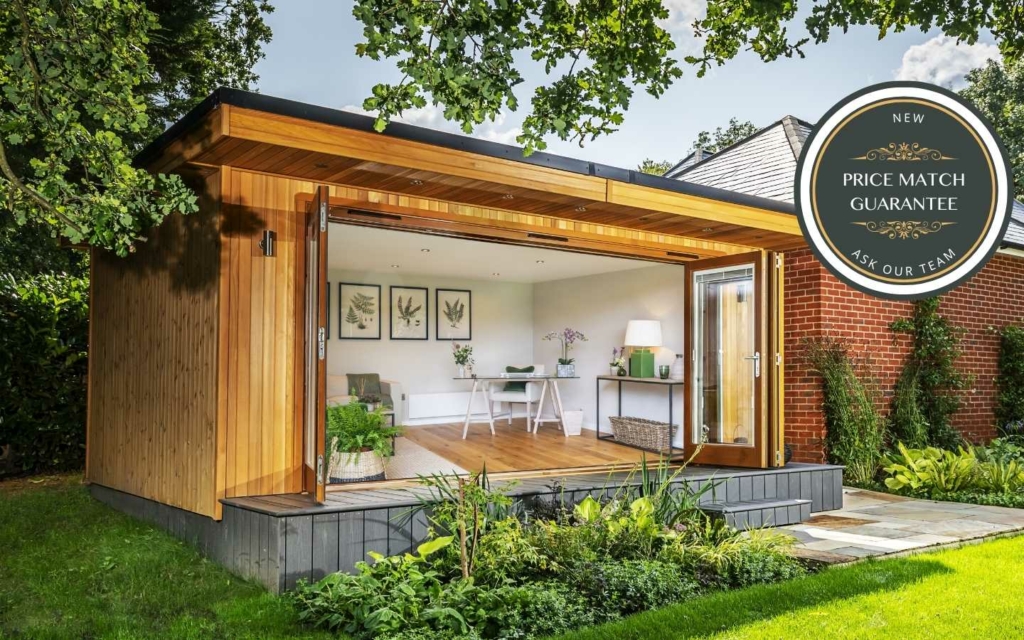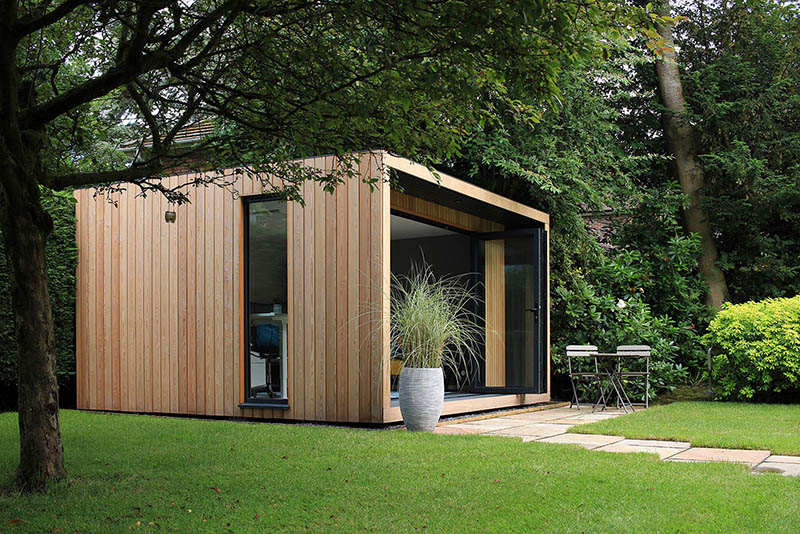Excellent Info For Planning Permission For Garden Summer Houses
Wiki Article
What Kind Of Restrictions Do You Have On Gardens, Rooms And Other Areas.?
Specific size restrictions will often determine whether planning permission is needed for extensions to garden rooms, extension, conservatories outhouses. Here's a list of the dimensions that could require you to seek planning permission.
Planning permission will be required for an outbuilding detached when it is more than 50% of the total land that surrounds the home (excluding the footprint).
Height limitations:
Single-story buildings The maximum eaves height must not exceed 2.5 meters, and the total height must not exceed 4 meters in the case of a dual-pitched roof or 3 meters for other kind of roof.
The height of structures that are not more than 2 meters high is 2.5 meters.
Floor Area:
Even the planning approval isn't required, structures with a greater floor area than 30 square meters may need to be approved according to the building regulations.
Proximity to boundaries:
If the structure is within 2 meters of a border the planning permission is typically required if the structure's height is greater than 2.5 meters.
Building Usage
There is no limit on size, but the intended use for the garden area could impact the requirement for permission to plan. For example, if the structure is intended to be used for housing or as a business premises Planning permission is more likely to be required.
Permitted Development Rights:
Permitted Development Rights have specific size restrictions and conditions. These rights can vary depending on whether the property is situated within a conservation area or is subject to limitations.
Conservatories and Extensions
For rear extensions with a single story, the depth maximum of an extension is typically 4 metres for detached homes, and 3 metres for terraced or semidetached homes. These can be extended to 8 meters and 6 meters,, under the Neighbour Consultation Scheme, subject to certain conditions.
The height limit for an extension to the rear with a single story is 4 metres.
Side Extenders
For extensions on the sides, width and height should not exceed four meters.
Volume Restrictions:
In some areas, like conservation zones, or Areas of Outstanding Natural Beauty, any construction that is greater than 10% or expands its size by 50 cubic meters may require planning permission.
Front Extensions
Planning permission might be required for extensions that go beyond the front of the home that faces the street.
Verify with your local authority because the rules could differ in accordance with local councils as well as conditions on the property. Even if you don't need permission to plan A building regulation approval is still required to ensure the integrity of your structure. Follow the top rated composite garden buildings for site advice including luxury outhouse, garden rooms near me, herts garden rooms, copyright outhouse, garden room heater, garden rooms hertfordshire, garden rooms in St Albans, garden room planning permission, myouthouse, garden rooms brookmans park and more.

What Kind Of Planning Permission Will You Require To Construct An Area For A Garden, As An Example?
If you are planning to construct garden offices, conservatories outhouses, garden offices or outhouses the issues of your neighbors will determine the need for planning permission. There are two crucial aspects to think about: Privacy and Overlooking.
If the building will overshadow neighboring properties which could result in the loss of privacy the planning permission will likely be needed. The building shouldn't adversely affect people's living conditions.
Overshadowing, Loss of Light
A planning permit is usually required if the proposed construction is likely to cause significant loss of light or shadowing of nearby homes. The local planning authority will assess the impact on the amount of sunlight and daylight that is available to neighboring properties.
Noise and Disturbance:
Planning permission is necessary if the garden or extension is going being used for noise-generating activities (such as guests visiting your office at home, a music studio, or a workshop, etc.). The level of noise should be within a reasonable range and must not be disruptive to neighbors.
Visual Impact and Character
The design, appearance and the size of the new structure must be in line with the character of the neighborhood. Planning permits ensure that the proposed development is pleasing to the eye and does not detract from the aesthetics of the neighborhood.
Boundary proximity:
Buildings that are built within two meters of a boundary, or structures higher than 2.5 meters may require planning permission. The reason for this is to prevent disputes and impact on neighboring properties.
Access to shared resources as well as Rights of Way
To ensure that shared access or rights of way are not obstructed, or negatively affected by the construction permits for planning will be required.
Oppositions of Neighbors
The right of consultation with neighbors is a crucial aspect of the process of planning. If there objections from neighbors the authority for planning will take into account the concerns of neighbors when deciding whether to approve the application.
Effect on the value of property
Planning permission is typically needed when major changes to the value of the homes around you occur. This might not be the sole reason however it could influence the decision. The local authority will take into account the impact of these changes when making a decision.
Covenants and Deed Restrictions
There may be deed restrictions or covenants on the property that require compliance regardless of the planning permission. These agreements could affect neighborhood harmony by dictating what is permitted and what is not.
Construction Disturbance:
Planning permission could provide relief from disturbances created during construction, such as dust, noise and traffic. There may be conditions imposed on the construction project to reduce its impact on neighbours.
Impact of Infrastructure
If the structure is causing additional strain on local infrastructure (e.g. drainage, parking, road usage) the planning permit ensures that these impacts are assessed and appropriately managed.
Consultation with the Community
In certain situations, a broader community consultation process could be necessary, particularly in the case of more complex or controversial developments. This allows for more democratic decision making that takes into consideration the views of the local population.
In short, the neighborhood's concerns play a significant role when it comes to planning permission for conservatories, garden rooms outhouses, gardens offices, or extensions. The proposed development must not adversely affect the living conditions of neighbors as well as their privacy, level of light and noise as well as the overall look and feel. Talking with the local planner and engaging with neighbors early in planning can solve these issues and lead to the process of approving the project. Have a look at the most popular small composite summer house for blog advice including herts garden rooms, garden rooms in St Albans, outhouse garden, composite garden office, garden rooms brookmans park, what size garden room without planning permission, composite summer house, outhouse builders, outhouse for garden, garden room planning permission and more.

What Planning Permission Do You Need For Your Garden Areas, Etc. In Terms Of Appearance And Design?
If you're planning to build garden rooms, conservatories, outhouses, extension or garden offices, the design and appearance of the structure play an important factor in determining if permission for planning is needed. The most important factors to consider:
Planning permission may not be required if the structure you want to build falls within the permitted development right of your property. There are specific design and appearance requirements which must be met.
Size and Scale:
The size and scale of the new structure should be proportional to the property's existing size and buildings around it. If the structure exceeds the limit of size that is permitted the building must be approved for planning.
Height and massing
The height of the new structure and its mass should be in line with the surrounding structures and the land. Planning permission is generally required for structures that exceed the height limit or are out of scale to the size of the property.
Materials and Finishes
The finishes and materials chosen should compliment the property and the buildings around it. The material chosen might need to be approved by the local authority for planning, if they are out of nature with the surrounding buildings.
Design Harmony:
The design of the proposed structure needs to be in line with the architectural style that is in place. Planning permission is necessary when the design proposed isn't in accordance with the local character and appearance.
Roof Design:
The style of the roof should be in harmony with both the architecture of the building and of the buildings around it. Planning permission could be required if the roof design is not line with the local style and appearance.
Fenestration Windows and Doors:
The style and location of windows and doors should be harmonious with the property's existing and nearby structures. The proposed fenestration might require planning approval if not compatible with the local character and style.
Treatment for Facades
The way the facade is treated should be in harmony with the current property and surrounding buildings. It may be necessary to obtain planning permission for any proposed facade treatment which is not in harmony with the appearance and character of the location.
Landscaping:
The landscaping surrounding the new structure must be in harmony with the existing property and surrounding buildings. Planning permission may be required if proposed landscaping does not fit with the local character and style.
Visual Impact:
The visual impact of the new structure's visual impact on the surrounding landscape should be minimal. If the structure proposed has a negative impact on the surroundings the planning permission might be needed.
Heritage and Conservation Areas:
If the property located in an area designated as heritage sites or for the preservation of the natural beauty of it, the design and aesthetic requirements may be more stringent. If any new structures do not satisfy the above requirements an application for planning permission may be required.
Architectural and Planning Guidelines:
Local planning authorities often issue design and aesthetic guidelines. Planning permission might be required if the proposed structure isn't in line to these standards.
In the end, the planning approval for garden rooms, conservatories, outhouses, garden offices, or extensions is often contingent on the design and appearance of the proposed structure. It is important to check prior to constructing with local authorities to determine if planning permission is necessary and ensure that your style is in line with local guidelines for character. Take a look at the top office design stevenage for website advice including outhouse, garden rooms near me, copyright outbuildings, outhouse building, outhouse, composite garden office, garden rooms near me, best heater for log cabin, garden office hertfordshire, garden room conservatory and more.
